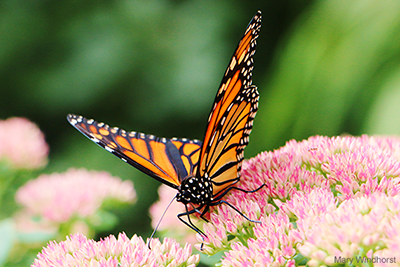Creating a Garden Sanctuary for Local Wildlife

Wildlife need our help. Human activity has changed and eliminated habitat, locally, and on the global scale, and birds, butterflies, and other wildlife are pushed into ever-shrinking wilderness areas.
You can make a difference. You can invite wildlife back to your own yard and neighborhood by planting a simple garden that provides habitat. Imagine your garden teeming with singing songbirds, colorful butterflies, flitting hummingbirds, and other small wildlife.
Providing a sustainable habitat for wildlife begins with your plants. That’s why we call it a wildlife habitat “garden.” When you plant the native plant species that wildlife depend on, you create habitat and begin to restore your local environment. Adding water sources, nesting boxes, and other habitat features enhances the habitat value of your garden to wildlife. By choosing natural gardening practices, you make your yard a safe place for wildlife.
Creating a wildlife garden reverses some of the human-caused habitat destruction that is hurting wildlife. It’s easier than you might think. Here is what your wildlife garden should include:
Food: Native plants provide nectar, seeds, nuts, fruits, berries, foliage, pollen, and insects eaten by an exciting variety of wildlife. Feeders can supplement natural food sources.
Water: All animals need water to survive and some need it for bathing or breeding as well.
Cover: Wildlife need places to find shelter from bad weather and places to hide from predators or stalk prey.
Places to Raise Young: Wildlife need resources to reproduce and keep their species going. Some species have totally different habitat needs in their juvenile phase than they do as adults.
Sustainable Practices: How you manage your garden can have an effect on the health of the soil, air, water, and habitat for native wildlife as well as the human community
https://www.nwf.org/garden-for-wildlife/create






